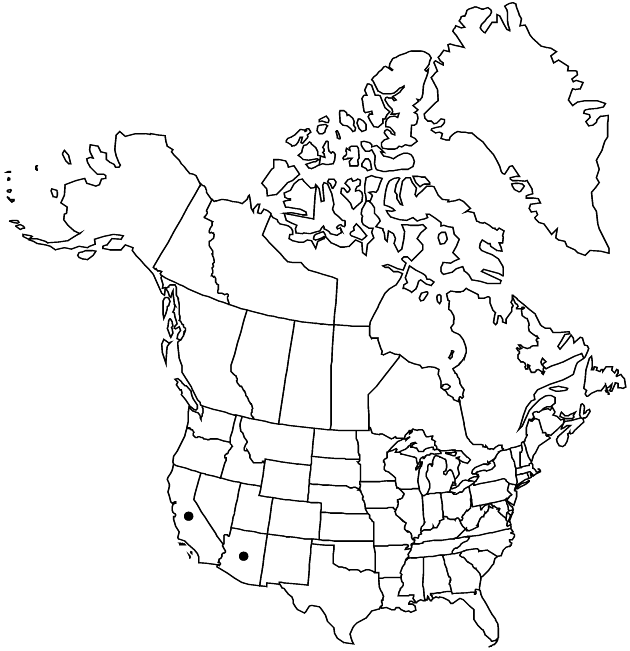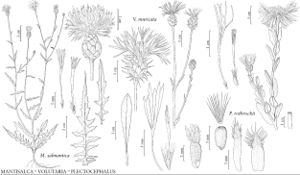Difference between revisions of "Mantisalca salmantica"
Biblioth. Universelle Rev. Suisse, pér. 5, 5: 111. 1930.
FNA>Volume Importer |
imported>Volume Importer |
||
| (6 intermediate revisions by 2 users not shown) | |||
| Line 8: | Line 8: | ||
}} | }} | ||
|common_names=Dagger-flower | |common_names=Dagger-flower | ||
| − | |basionyms={{Treatment/ID/ | + | |special_status={{Treatment/ID/Special_status |
| + | |code=I | ||
| + | |label=Introduced | ||
| + | }}{{Treatment/ID/Special_status | ||
| + | |code=F | ||
| + | |label=Illustrated | ||
| + | }} | ||
| + | |basionyms={{Treatment/ID/Basionym | ||
|name=Centaurea salmantica | |name=Centaurea salmantica | ||
|authority=Linnaeus | |authority=Linnaeus | ||
| + | |rank=species | ||
| + | |publication_title=Sp. Pl. | ||
| + | |publication_place=2: 918. 1753 | ||
}} | }} | ||
|synonyms= | |synonyms= | ||
| Line 27: | Line 37: | ||
|elevation=0–1700 m | |elevation=0–1700 m | ||
|distribution=Ariz.;Calif.;Europe;n Africa. | |distribution=Ariz.;Calif.;Europe;n Africa. | ||
| − | |discussion=<p>Mantisalca salmantica is native to the Mediterranean region. It is considered an uncommon introduction into disturbed sites.</p> | + | |introduced=true |
| + | |discussion=<p><i>Mantisalca salmantica</i> is native to the Mediterranean region. It is considered an uncommon introduction into disturbed sites.</p> | ||
|tables= | |tables= | ||
|references= | |references= | ||
| Line 36: | Line 47: | ||
-->{{#Taxon: | -->{{#Taxon: | ||
name=Mantisalca salmantica | name=Mantisalca salmantica | ||
| − | |||
|authority=(Linnaeus) Briquet & Cavillier | |authority=(Linnaeus) Briquet & Cavillier | ||
|rank=species | |rank=species | ||
| Line 51: | Line 61: | ||
|publication title=Biblioth. Universelle Rev. Suisse, pér. | |publication title=Biblioth. Universelle Rev. Suisse, pér. | ||
|publication year=1930 | |publication year=1930 | ||
| − | |special status= | + | |special status=Introduced;Illustrated |
| − | |source xml=https:// | + | |source xml=https://bitbucket.org/aafc-mbb/fna-data-curation/src/2e0870ddd59836b60bcf96646a41e87ea5a5943a/coarse_grained_fna_xml/V19-20-21/V19_192.xml |
|tribe=Asteraceae tribe Cardueae | |tribe=Asteraceae tribe Cardueae | ||
|genus=Mantisalca | |genus=Mantisalca | ||
Latest revision as of 19:49, 5 November 2020
Herbage cobwebby-tomentose proximally, glabrous distally. Stems usually 1, leafless distally. Leaves: basal blades oblong, 10–25 cm, margins pinnately lobed; cauline linear to lanceolate, smaller distally, dentate to pinnately dissected. Heads long-pedunculate. Involucres ovoid, distally narrowed. Phyllaries greenish or stramineous, apically blackish, spine tips deciduous, spreading or reflexed, 1–3 mm. Corollas ± purple (rarely white). Cypselae dark brown, 3–4 mm; pappus bristles brownish white or reddish, 2–3 mm. 2n = 18 (Italy), 20 (North Africa), 22 (Europe).
Phenology: Flowering spring–early summer (May–Jun).
Habitat: Disturbed sites
Elevation: 0–1700 m
Distribution

Introduced; Ariz., Calif., Europe, n Africa.
Discussion
Mantisalca salmantica is native to the Mediterranean region. It is considered an uncommon introduction into disturbed sites.
Selected References
None.
